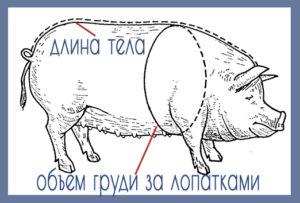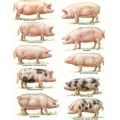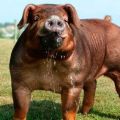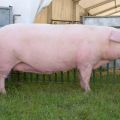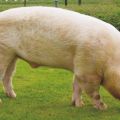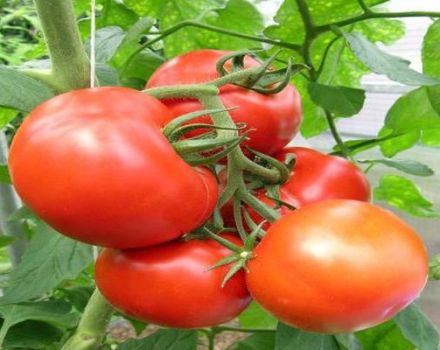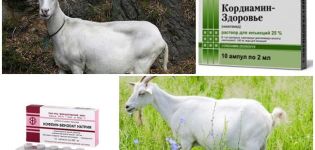Description and characteristics of the Duroc pig breed, conditions of detention and breeding
Pigs of the elite Durok breed are bred to obtain marbled meat. In it, fatty layers are evenly distributed in muscle tissues. Due to the peculiarities of the content of this breed, it is more profitable to breed it in the warm southern regions of the Russian Federation, in Siberia there are also farmers raising Duroc pigs.
History of the Duroc pig breed
For this breed, we need to thank the farmers of America and the settlers who brought pigs to the continent from different parts of the world. In the era of colonization, emigrants, coming to the United States, brought with them all kinds of pets. There was a lot of genetic material. The breeding base of the breed was the red-skinned pigs imported from West Africa and their relatives who came from Europe. Descendants of the modern Durok lived in England and the French provinces. The selection of the breed took place spontaneously at the discretion of the farmers.
Thanks to her, a late-ripening breed, called the Jersey, appeared in the state of New Jersey, and the early-maturing breed of Duroc among the farmers of the state of New York. When animals of these varieties were crossed, a purebred hybrid was obtained.
Back in 1883, the Duroc Jersey breed was officially registered, classified as greasy. All subsequent selection was aimed at improving the quality of meat. Now the breed has a single name, Duroc, it is considered meat, it is grown on an industrial scale in Europe, China and at home in the United States.
Description and characteristics
It is not difficult to recognize Duroc pigs by the original color of the skin and the ears hanging over the eyes. In animals, not only the skin is brown, the bristles are also colored, its color repeats the golden brown shades of the skin. The color is uneven, spotted, there are no light tan marks of white.

External characteristics
Sows and adult boars have a massive, proportional body, legs are straight, stable, with pronounced hams, a large head with a peculiar profile, it is smoothly concave. Long drooping ears partially cover medium-sized brown eyes.
The hide is covered with coarse medium-length bristles. In piglets and females, it is lighter in color and does not grow as densely as in boars. On the patches, the skin is dark, almost black, with a slight bluish tinge.
Weight and dimensions
Normally a strong constitution. Dryness and looseness are considered a deviation from the accepted breed standards. The pigs are tall, legs are long, the back is straight or with a slight hump (arched). The round chest is broad.
| Floor | Dina torso (cm) | Weight, kg) |
| Boar | 185 | 320 |
| Sow | 175 | 240 |
Newborn piglets weigh 1.1-1.6 kg.
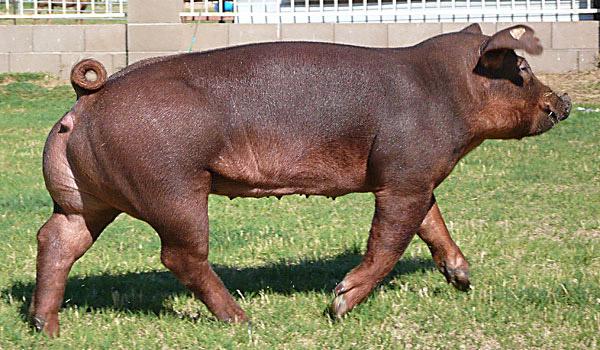
Productive qualities
Early maturity of offspring is 165 days. With an average daily weight gain of 700-950 g, fattening piglets are kept for up to six months. By 6 months, the total weight of young animals reaches 100 kg. High early maturity is the genetic characteristics of the breed plus good maintenance, abundant feeding and a balanced diet.
| Index | Value |
| Slaughter exit | 75-76% |
| Lean meat yield | 57% |
| Lard thickness | 14-16 mm, on the ridge up to 18 mm |
A suckling pig of the Duroc breed gains 300 g per day. By the time of weaning, the average weight of young animals is 14-17 kg.
Advantages and disadvantages
The second place in the world in terms of the number of livestock does not allow doubting the merits of the breed, but Duroc pigs also have disadvantages.
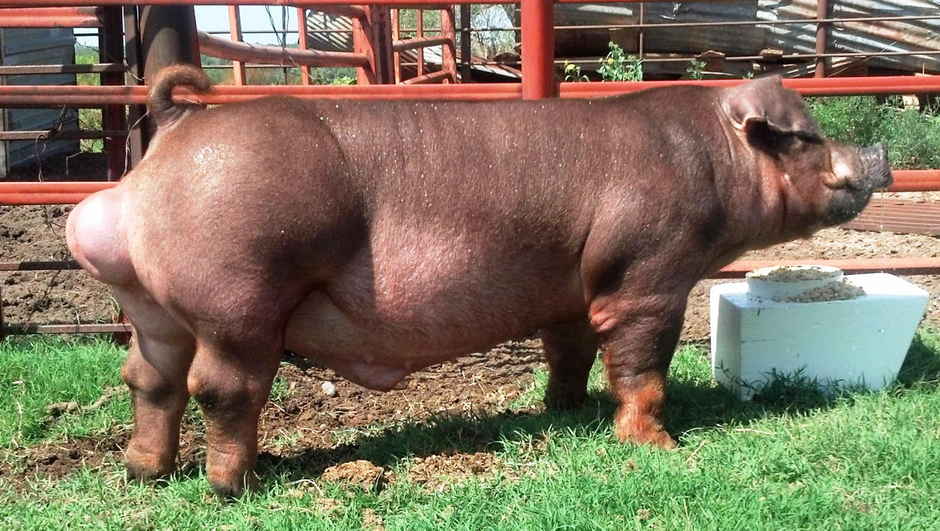
| Advantages of the breed | Disadvantages of the breed |
| Economically beneficial in warm climates, animals are on a round-the-clock range | Low fertility - maximum 20 piglets per year, instead of 30 like in other breeds |
| Dietary properties and special taste of meat | In the northern regions, the costs of keeping pigs are increasing, most of the time the animals spend in the pigsty |
| Calm disposition, adults do not show aggression | Productivity is 100% dependent on the diet, sharply reduced if the feed is low in protein |
| Sows are distinguished by a well-developed maternal instinct, this simplifies the care of newborn offspring | Tendency to rhinitis |
Conditions for keeping animals
The Duroc breed is economically profitable to breed in regions with a warm climate. As long as the average daily air temperature does not drop below 10 ° C, pigs are kept on pasture. Under natural conditions, animals move actively (this improves the quality of meat), find additional food.

In the summertime, walking areas are equipped with sheds, pigs are saved there from the extreme heat. For the prevention of overheating, skin and other diseases, they arrange places for bathing in liquid mud. In winter, Duroc pigs need dry bedding. They burrow into it at night and during the day while resting. When kept in a pigsty, one adult animal needs a space of 5 m².
Feeding features
To help piglets gain weight quickly, they are fed feed containing protein. The diet includes dairy products and animal flour (bone, fish, blood). In summer they feed 2 times, in winter 3 times. For 1 kg of growth, 4 feed units are consumed. The basis of the high-protein diet of Duroc pigs:
- legumes;
- silage;
- potatoes;
- food waste;
- buttermilk;
- serum;
- return;
- beet.
The percentage of oats, barley, corn in the feed is low. Cereals contribute to an increase in the fat layer, this deteriorates the quality of meat, and reduces its yield. When it is economically viable, farmers prepare the feed on their own; otherwise, the young are fed with specialized compound feed.
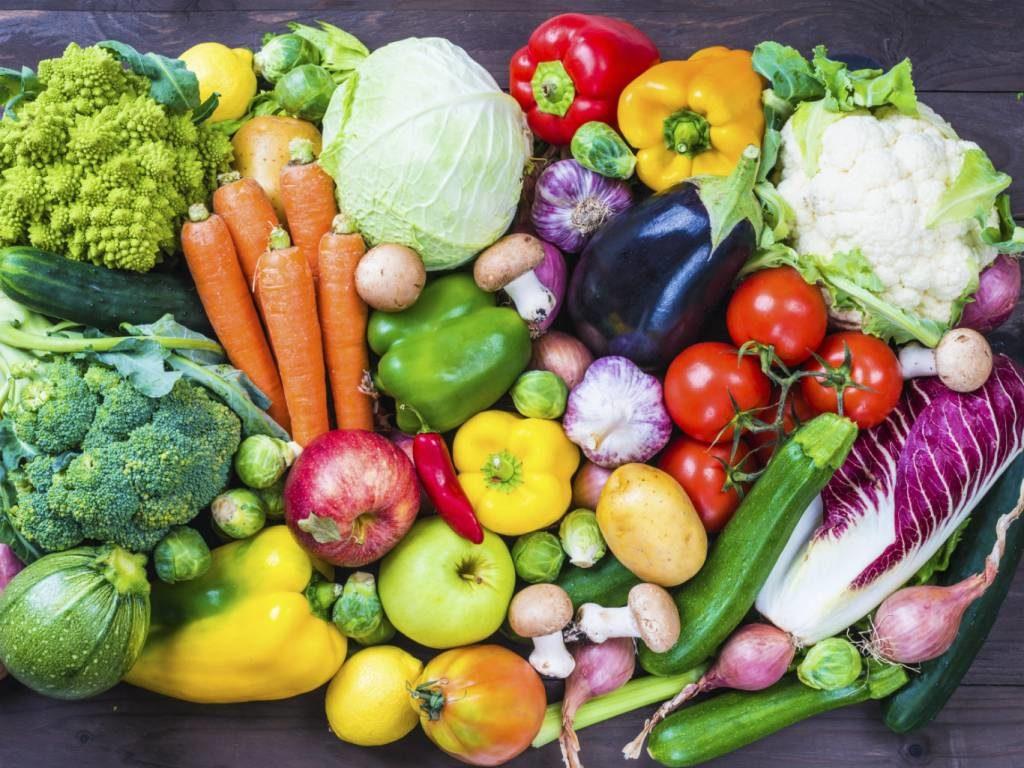
Breeding
It is unprofitable to breed the Duroc breed for sale because of the low fertility of sows. There are only 8-10 piglets in one litter, and one sow brings from 16 to 20 pups per year. Farmers mate sexually mature individuals to increase the size of their herd.
The rut lasts 2 days, the boar is twice run into the pen to the sow. If the mating is successful, the sow gives birth after 15 and a half weeks. During pregnancy, she is provided with the appropriate conditions:
- fresh air (open enclosure);
- enhanced nutrition;
- a separate stall for the last dates.
The viability of Duroc piglets is high. 93-95% of all offspring survive. Sows have a little milk, so the young are fed first with cow's milk, then they begin to give cereals, root crops, vitamins. At 1-1.5 months, the piglets are transferred to self-feeding, taken away from the sow.
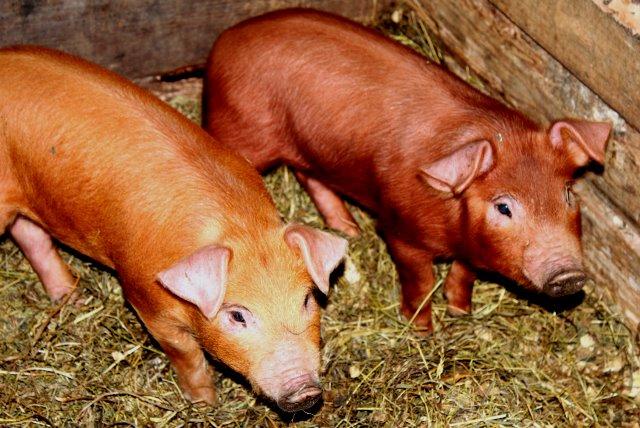
Diseases and their treatment
Piglets' health problems arise when the rules of keeping are violated. The most common disease of the breed is atrophic rhinitis. The disease is recognized by its characteristic symptoms:
- sneezing, snorting, wheezing;
- lacrimation;
- redness of the whites of the eyes;
- discharge from the nostrils.
Animals recover quickly but lose weight during illness. The same symptoms occur with bronchial pneumonia, it is treated with medication by veterinarians. Livestock breeders cope with atrophic rhinitis on their own: the nostrils are cleaned of crusts, washed with a weak solution of potassium permanganate, an antibiotic is instilled, the nasal passages are lubricated with petroleum jelly, and the piglets are inhaled with turpentine and ichthyol.
Breeding prospects in Russia
On the territory of Russia, there are few farms engaged in pedigree breeding of Durok pigs, so it is difficult to find and buy piglets of this breed. Farmers keep breeding pigs for their needs, improve the quality indicators of livestock, crossing other breeds with duroc.
You can buy a purebred piglet at specialized complexes. Its origin must be confirmed by an appropriate certificate. Piglets are sold for $ 20, breeding pigs for $ 200.
